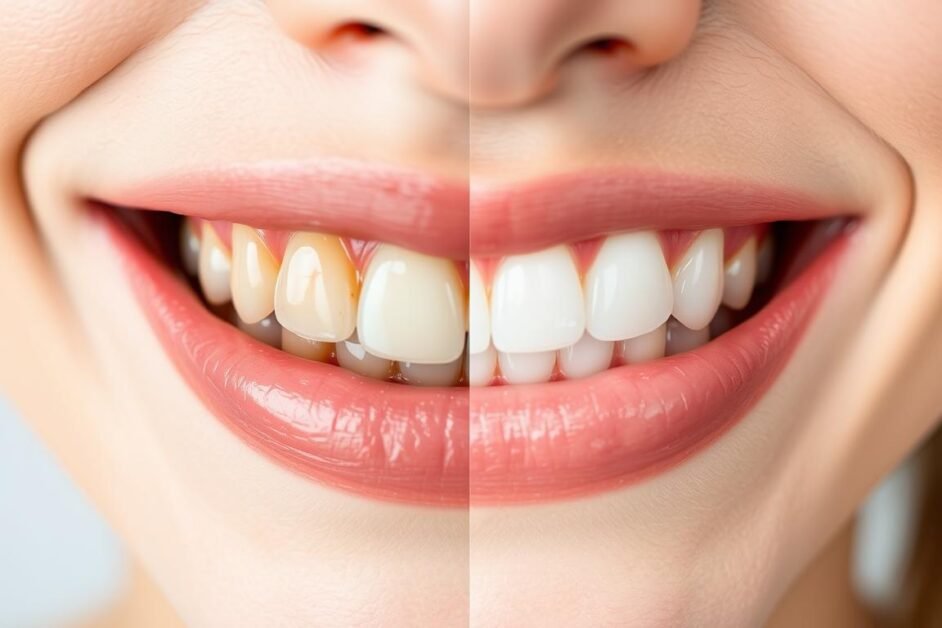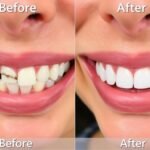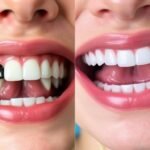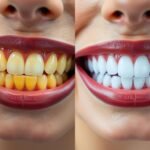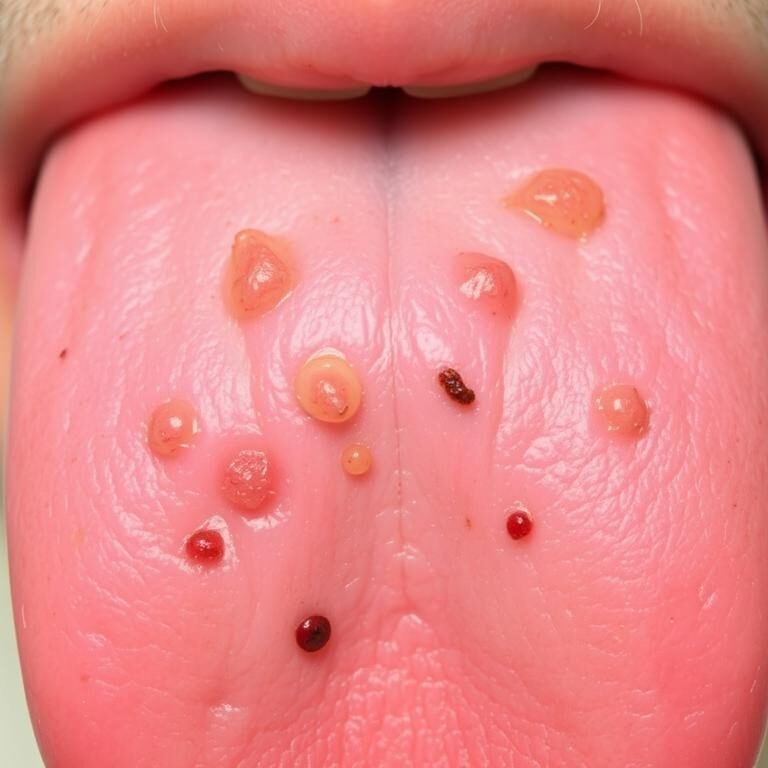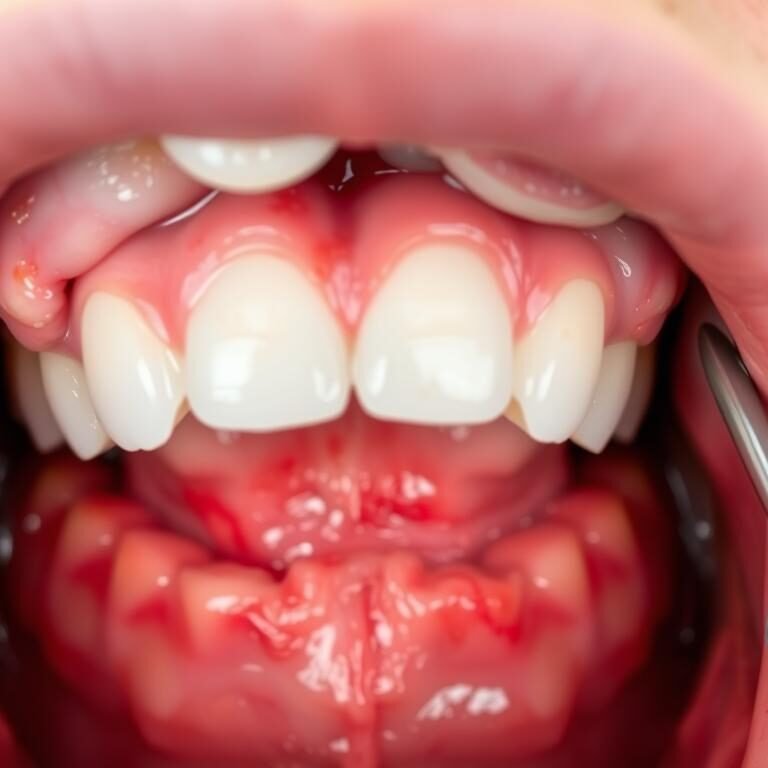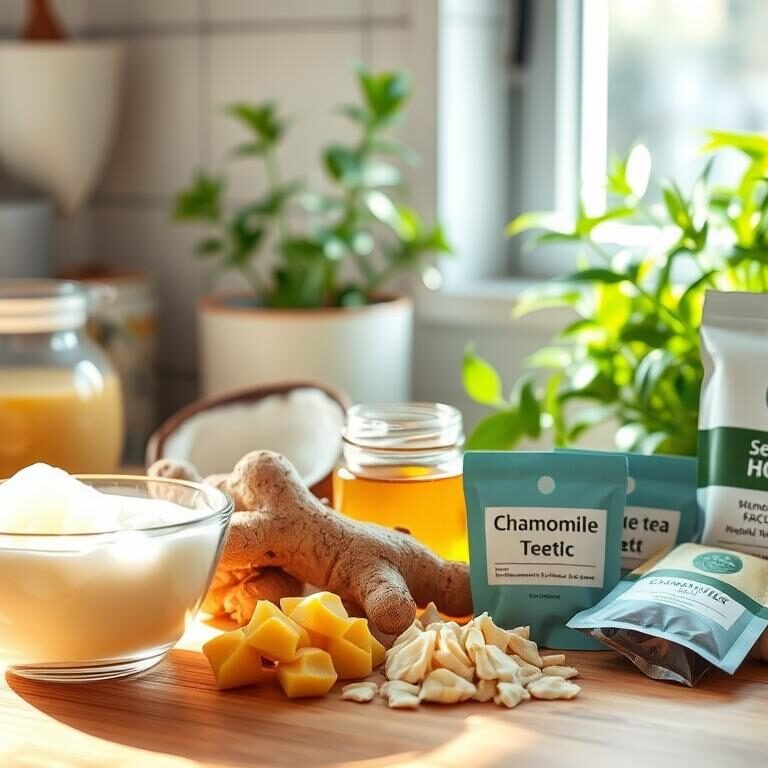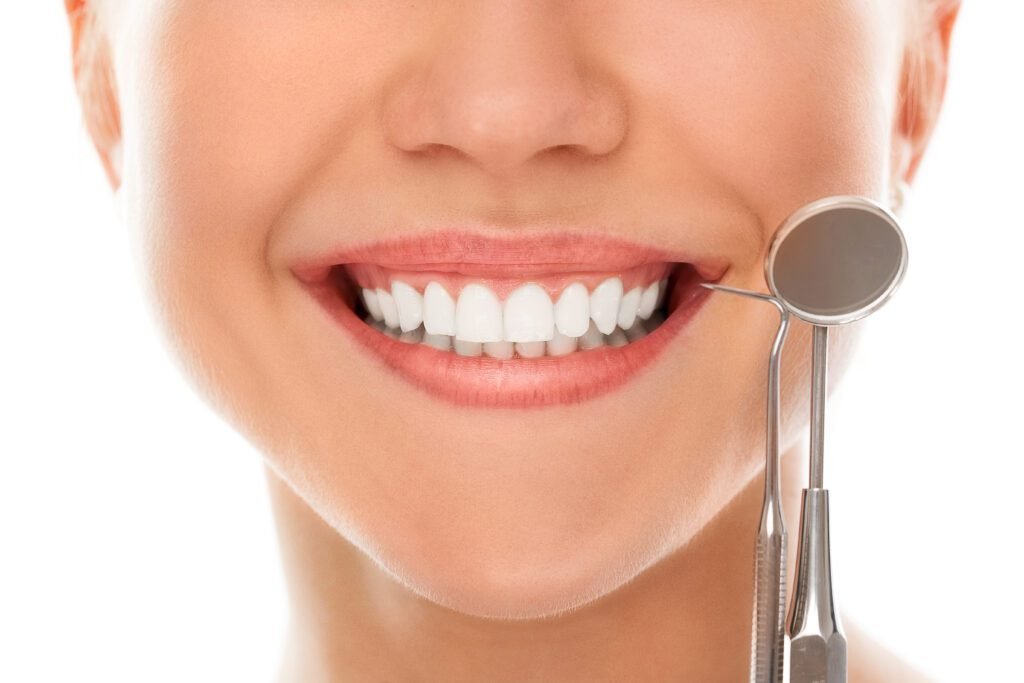Imagine flashing a dazzling smile that lights up the room. This dream is possible thanks to professional teeth whitening treatments. The journey from dull teeth to a bright smile can change your life.
Studies show that about 90% of adults see their smile as key to social success. This shows how powerful a beautiful grin can be. In this guide, you’ll see the amazing changes people have made with teeth bleaching before and after. You’ll learn about the different methods and how to keep your smile bright.
Teeth bleaching has a big impact, whether it’s in-office or at-home. It’s important to pick the right method for you. This guide will help you on your whitening journey. Let’s find your brightest smile together!
For more info on getting a radiant smile, check out our at-home whitening solutions.
Table of Contents
Understanding Teeth Whitening
Teeth whitening is now the top cosmetic dentistry choice worldwide. It promises to give you a brighter smile and a better look. People get it to fix discoloration from aging, smoking, and eating foods like coffee and red wine.
Knowing what causes stains helps keep your teeth healthy and looking good. This knowledge is key to getting the best results from whitening.
How well teeth whitening works can differ for everyone. Professional treatments do it faster and better than home kits. For example, in just one visit, you can see a big change in your teeth’s color.
This quick success is thanks to special bleaching agents. These are safe because they follow strict FDA rules.
Professional whitening, like Zoom!, uses strong lights to make results even better. Many people feel more confident and happy after these treatments. This can really improve how you feel and how you interact with others.
To keep your smile bright, practice good oral hygiene and see your dentist regularly. Getting touch-ups every six months to a year can keep your teeth looking great.
Choosing teeth whitening can really change how you see yourself. It makes you more likely to smile and feel confident around others. For more on safe ways to brighten your smile, check out this link.
What Is the Dental Bleaching Process?
The dental bleaching process aims to make teeth whiter. First, a deep clean removes surface stains. This makes teeth ready for bleaching agents like hydrogen peroxide.
The amount of peroxide varies by treatment. In-office treatments use 15% to 43% peroxide. At-home kits have 3% to 20% peroxide.
Protective measures are taken to guard sensitive areas. After bleaching, many see a big color change. Studies show teeth can get 3 to 8 shades lighter, best for yellow teeth.
Many choose professional whitening for better results. There are in-office treatments and at-home kits. Knowing your options helps you pick the right one for you.
| Method | Peroxide Concentration | Whitening Results | Cost Range |
|---|---|---|---|
| In-Office Treatment | 15% – 43% | 3 – 8 shades brighter | $500 – $1,000 |
| At-Home Kits | 3% – 20% | 1 – 2 shades over 10 – 14 days | $10 – $600 |
| Whitening Toothpaste | N/A | About 1 shade | Varies |
| Whitening Rinses | N/A | Slight enhancement | Varies |
Teeth Bleaching Before and After: What to Expect
Teeth bleaching can change tooth color a lot. In-office treatments can make teeth up to 15 shades lighter. But, results can vary from person to person.
Right after the treatment, teeth often look much whiter. But, they might get a bit darker over the next week. This is because the enamel gets a bit dehydrated.
It’s important to choose a shade that looks natural. Going for a shade that matches your original tooth color can help avoid an unnatural look. Professional whitening can give great results, but keeping them up requires effort.

After whitening, it’s best to avoid foods and drinks that can stain teeth for at least an hour. Eating a “White Diet” for 24 to 48 hours after can also help keep teeth bright longer.
How long whitening lasts depends on several things. These include how porous your enamel is and your diet. Here’s a table showing how long whitening can last based on these factors:
| Enamel Type | Habits | Duration of Results |
|---|---|---|
| Porous Enamel | Frequent staining agent consumption | Up to 6 months |
| Non-Porous Enamel | Minimal exposure to staining beverages | Up to 2 years |
Drinking tobacco and alcohol can quickly undo whitening. Regular dental visits every six months are key. They help keep teeth healthy and ready for whitening. With the right care, your bright smile can last longer after bleaching.
Types of Professional Teeth Whitening Treatments
There are many professional teeth whitening options. These range from in-office whitening to at-home kits. Choosing the right one is key to getting the best results.
In-Office Whitening Procedures
In-office whitening is very effective. Treatments like Zoom use strong bleaching agents. They can change your tooth color in just 60 to 90 minutes.
Most people see big changes right away. This makes it a top choice for those wanting quick results.
At-Home Whitening Kits
At-home kits are a flexible option. They let you whiten your teeth at home. These kits take a week or two to get ready.
You use the whitening gel for 30 to 60 minutes daily. They cost between $150 and $400 but might not work as fast as in-office treatments.
It’s important to know the differences. In-office whitening is quick and dramatic. At-home kits are cheaper and more convenient but take longer. For more details, check out this resource.
| Aspect | In-Office Whitening | At-Home Whitening Kits |
|---|---|---|
| Cost | $500 – $1,000 | $150 – $400 |
| Treatment Duration | 60 – 90 minutes | Variable, typically several weeks |
| Results Timeframe | Immediate | Gradual |
| Active Ingredient | Higher concentrations of hydrogen peroxide | Lower concentrations, personalized gels |
| Post-Treatment Sensitivity | Possible, varies by individual | Possible, generally milder |
The Chemistry Behind Teeth Whitening
Teeth whitening works thanks to special agents, with hydrogen peroxide leading the way. It breaks down stains in tooth enamel. This makes teeth look lighter and brighter.
The Role of Hydrogen Peroxide
Hydrogen peroxide is key because it releases free radicals. These radicals change tooth color by altering how light is reflected. This leads to a whiter smile.
Knowing how teeth whitening works can improve your experience. Here are some important points:
- At-home treatments use hydrogen peroxide in different strengths. This affects how fast and how much they whiten.
- Professional treatments use stronger hydrogen peroxide. They can whiten teeth in just 30 to 60 minutes.
- Products like strips and gels can whiten teeth by 1 to 2 shades in two weeks.
| Product Type | Concentration of Hydrogen Peroxide | Shade Improvement | Application Time |
|---|---|---|---|
| In-office Whitening | High | 1-3 shades (per treatment) | 30 to 60 minutes |
| Tray-Based Systems | Varies | 1-2 shades | 2 to 4 hours/day for several days |
| Whitening Strips/Gels | Lower | 1-2 shades | 30 minutes twice daily for 14 days |
| Whitening Rinses | Very low | 1-2 shades | 60 seconds twice daily for up to 3 months |
Understanding hydrogen peroxide’s role in whitening is key. It helps you choose the right treatment. Knowing this chemistry ensures you make smart choices for a brighter smile.
Factors That Influence Whitening Results
To get the best teeth whitening results, it’s important to know what affects them. These factors are key to success, making this info crucial for anyone thinking about whitening.
Initial Tooth Shade and Staining
The color of your teeth before whitening matters a lot. Tooth shade variations come from many sources, like food and health conditions. Stains from outside are easier to fix than those inside, often reversing years of color change.
Teeth with yellow undertones usually get whiter faster than those with brown or gray. Brown stains might come from too much fluoride, while gray can be from certain medicines. Professional bleaching is the safest and most effective way, showing results in weeks.
Another big factor is the teeth’s original state. Plaque can block whitening. Getting a professional cleaning before whitening is often suggested for better results. Also, following after-care tips, like avoiding red wine and coffee, helps keep teeth bright.
Going for regular whitening touch-ups is smart, even more so for those who stain teeth often. Things like too much coffee, tea, red wine, and smoking can stain. Knowing these can help set realistic goals for a brighter smile.
For more on whitening, check out personalized whitening plans that consider your tooth color and stains.
Comparing Whitening Methods: Efficacy and Cost
People looking for whiter teeth often face a tough choice. They must pick between professional and over-the-counter options. Each choice has its own benefits, like how well it works and its price. Professional treatments cost more but give better results and benefits.
Professional vs. Over-the-Counter Options
Professional teeth whitening uses strong agents like hydrogen peroxide. It can make teeth 5 to 8 shades lighter in 60 to 90 minutes. The results can last 6 months to 3 years. The cost for this can be from $300 to $1,000, with some methods like Philips Zoom costing about $500.
On the other hand, over-the-counter products are cheaper. They cost from $1 to $55 for strips and gels, and $5 to $10 for rinses. These products can make teeth a bit whiter but not as much as professional treatments. They also have less peroxide, usually under 10%, which affects how well they work.
The table below shows a detailed comparison of the two options:
| Whitening Method | Cost Range | Shade Improvement | Duration of Results |
|---|---|---|---|
| Professional In-Office | $300 – $1,500 | 5 – 8 shades | 6 months – 3 years |
| Professional At-Home | $100 – $600 | Similar to in-office | 4 – 6 months |
| Over-the-Counter Strips/Gels | $10 – $55 | 1 – 3 shades | Varies |
| OTC Whitening Pen | $5 – $400 | Minimal | Varies |
Choosing between whitening methods requires knowing about their efficacy and cost. Professional treatments might cost more upfront. But they often give better and longer-lasting results, making them a better value in the long run.
Caring for Your Bright Smile Post-Treatment
After whitening your teeth, it’s key to keep them clean to keep the results. For about 48 hours, your teeth are more prone to stains. This is because the teeth’s surface layer regenerates in a day.
During this time, stay away from foods and drinks that can stain your teeth. This includes things like coffee, red wine, and tomatoes.
Here are some tips for taking care of your teeth after whitening:
- Avoid acidic foods and drinks like soda and citrus fruits for at least 48 hours.
- Stay away from foods that stain, such as coffee and red wine.
- Eat light-colored, non-acidic foods like milk and fish for the first 48 hours.
- Use at-home whitening trays every six months.
- Visit your dentist for follow-up to keep your smile bright.
After whitening, you might feel some tooth sensitivity. This usually lasts from 1 to 3 days. To ease the pain, brush gently with a soft toothbrush.
Brushing twice a day and flossing are important for keeping your teeth white.
Here’s a table with foods and drinks to limit or avoid after whitening:
| Type | Foods/Beverages to Avoid | Foods/Beverages to Consume |
|---|---|---|
| Acidic | Citrus fruits, soda, tomatoes | Milk, rice, cauliflower |
| Staining | Coffee, red wine, dark sodas | Fish, skinless chicken >breasts, yogurt |
Following these care tips will help your whitening last longer. You’ll keep your smile bright and beautiful.
Common Stains: How They Affect Results
It’s important to know about tooth stains to understand whitening results. There are extrinsic and intrinsic stains, each affecting whitening differently. Diet, oral care, and habits also play a big role in tooth stains.
External vs. Internal Tooth Staining
Extrinsic stains come from smoking, coffee, tea, red wine, and dark foods. These stains usually respond well to whitening, making in-office treatments most effective. The impact on whitening effectiveness is significant because these stains are on the surface.
Intrinsic stains, on the other hand, are inside the tooth. They can come from genetics, medications, trauma, or too much fluoride. These stains are harder to treat and might need professional whitening or veneers. As we age, our enamel wears down, revealing yellow dentin.
Professional teeth whitening is often the best choice for all stains. For mild to moderate stains, at-home kits might work. But severe stains might need more advanced treatments, showing the difference in stain types.
Patient Testimonials: Real Results from Whitening Treatments
Patient whitening testimonials show amazing changes from teeth whitening. Many people see big improvements in their tooth color. For example, some moved from shade 10 to 5, and even from 12 to 6.
One person went from shade 5 to an amazing 1-2. This shows how effective these treatments can be. People are happy with the results and the experience. They say they felt so relaxed, some even fell asleep.
Patients talk about how safe and comfortable they felt. They say they didn’t feel any sensitivity after, unlike some home products. Some even traveled far, like one from Houston, to get this done. They all gave the service a perfect 10/10, praising the staff’s professionalism.
Many plan to come back for more and tell their friends. This shows how well professional whitening works. It uses strong agents like hydrogen peroxide and carbamide peroxide.
Table summarizing common results from patient testimonials:
| Shade Reduction | Percentage of Patients | Comfort Level | Recommendation Rate |
|---|---|---|---|
| 10 to 5 | 30% | Relaxed | 10/10 |
| 12 to 6 | 25% | Comfortable | 85% |
| 5 to 1-2 | 15% | No Sensitivity | 90% |
Feedback shows that professional whitening beats DIY options. It’s a smart choice for a brighter smile. For more info, check out the whitening before and after section.
Safety and Sensitivity of Teeth Whitening
Teeth whitening treatments are safe for many people. But, it’s key to know about sensitivity concerns. Sensitivity can range from mild to severe, making it crucial to pick the right treatment.
Addressing Common Concerns About Sensitivity
Knowing the side effects of teeth whitening helps you make better choices. About 10-15% of people feel some tooth sensitivity after whitening. Using products too much can damage enamel, making sensitivity worse.
It’s best to avoid staining foods and drinks for at least 48 hours after treatment. This helps keep your teeth looking good.
The table below shows the sensitivity concerns for different whitening methods:
| Whitening Method | Cost Range | Common Side Effects | Sensitivity Percentage |
|---|---|---|---|
| In-Office Treatments | $300 – $800 | Mild to moderate sensitivity, gum irritation | Transient sensitivity in two-thirds of patients |
| At-Home Kits | $20 – $100 | Gum irritation, mild sensitivity | 20-30% of users experience gum irritation |
Talking to a dental professional about sensitivity concerns before treatment is smart. Regular dental visits help keep your mouth healthy and check for whitening side effects. Even though higher hydrogen peroxide levels might cause more sensitivity, no long-term damage has been found when used correctly.
Long-term Maintenance of Whitening Results
Getting your teeth whitened is just the start. To keep your teeth looking bright, you need to take care of them every day. Regular dental check-ups, once a year, are important. They help keep your teeth healthy and looking good.
After your teeth whitening, avoid foods that can stain your teeth. This means no coffee, red wine, or berries for 48 hours. Brush and floss twice a day, and use whitening toothpaste twice a week. Using products like SNOW’s for sensitive teeth can also help.
How long your whitening lasts depends on your teeth and what you eat. Some people keep their smile bright for three years with good care. Others might need to get their teeth whitened again every six months. Taking care of your teeth and making smart choices about your diet are crucial for a long-lasting smile.
FAQ
What is the difference between professional teeth whitening and at-home kits?
Professional teeth whitening uses stronger bleaching agents for quick results. At-home kits are cheaper and more flexible but may not work as well.
How many shades whiter can I expect my teeth to become?
You can expect your teeth to get 4 to 10 shades lighter after professional whitening. This depends on your teeth’s initial color and condition.
What causes tooth discoloration?
Tooth discoloration comes from many sources. This includes foods and drinks like coffee and red wine, smoking, some medications, and aging.
Is the whitening procedure safe for teeth and gums?
Yes, teeth whitening is safe when done by a professional. Most systems are designed to avoid sensitivity and protect gums.
What are the main steps in the dental bleaching process?
The process starts with a dental cleaning to remove stains. Then, a bleaching agent is applied. The dentist monitors to protect sensitive areas.
How can I maintain my whitening results after treatment?
To keep your smile bright, avoid staining foods and drinks. Brush well, use whitening toothpaste, and visit your dentist regularly.
Are there any risks associated with at-home whitening products?
At-home products can cause uneven results or sensitivity if used wrong. Professional treatments are safer because they’re supervised by a dentist.
What should I do if I experience sensitivity after whitening?
If you feel sensitivity, talk to your dentist. Many cases are mild and go away quickly. Your dentist can suggest products to help.
How do I know if I am a good candidate for teeth whitening?
A dental professional can check if you’re a good candidate. You should have good oral health, healthy gums, and realistic expectations.
How often can I undergo whitening treatments?
How often you can get treatments depends on your needs and the method. Professional treatments might be every few months. Use at-home kits carefully to avoid enamel damage.

